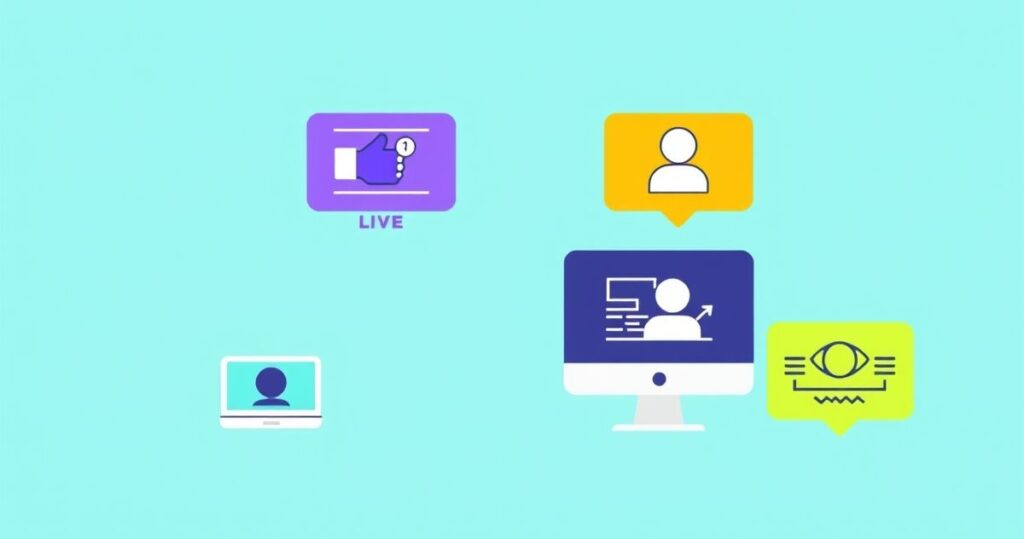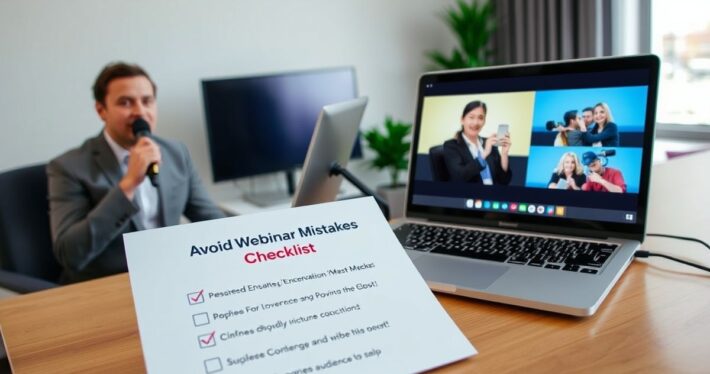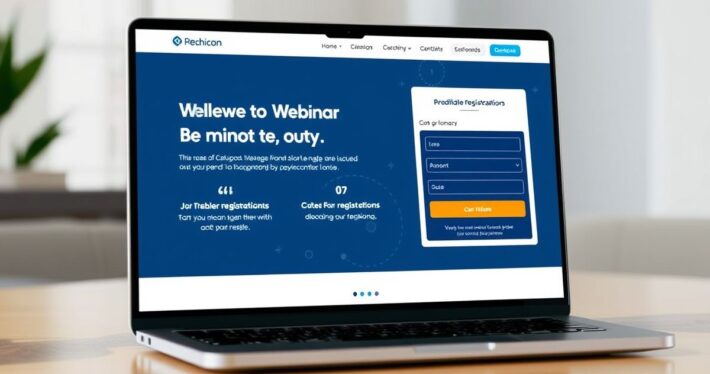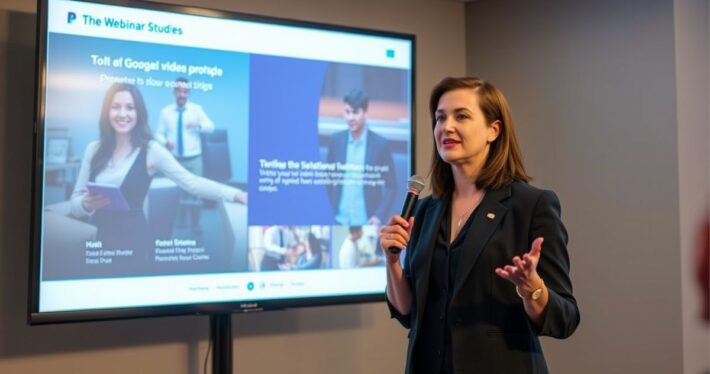Types of Webinars

Webinars have become a powerful tool for businesses, educators, and professionals to connect with their audience, share knowledge, and drive conversions. But not all webinars are created equal. Depending on your goals, audience, and resources, different types of webinars can serve different purposes. This comprehensive guide will walk you through the various types of webinars, their benefits, and how to choose the right format for your needs. Whether you’re hosting a live session, automating your content, or offering on-demand access, understanding these formats will help you maximize engagement and achieve your objectives.
1. Live Webinars
Live webinars are real-time, interactive sessions where the host and audience engage simultaneously. These are ideal for fostering a sense of community, answering questions in real-time, and creating an engaging experience.
Benefits:
- Immediate interaction with the audience.
- Builds trust and credibility.
- Allows for live polls, Q&A sessions, and feedback.
Uses:
- Product launches or demonstrations.
- Training or workshops.
- Live Q&A sessions with experts.
Tips:
- Promote it well in advance to ensure attendance.
- Test your technology (audio, video, and internet connection) before going live.
- Keep the session interactive to maintain audience interest.
Example: A fitness coach hosting a live webinar to demonstrate workout techniques and answer participants’ questions in real-time.
2. Automated Webinars (Evergreen Webinars)
Automated webinars are pre-recorded sessions that are scheduled to play at specific times. They are often referred to as “evergreen” webinars because they can be reused multiple times without requiring the host to be present.
Benefits:
- Saves time and resources.
- Can be scaled to reach a larger audience.
- Consistent messaging across multiple sessions.
Uses:
- Lead generation campaigns.
- Onboarding new customers or employees.
- Recurring training sessions.
Tips:
- Use professional tools to ensure high-quality recordings.
- Include interactive elements like polls or quizzes to keep the audience engaged.
- Schedule them at optimal times for your target audience.
Example: A SaaS company using an evergreen webinar to demonstrate their software features to potential customers without needing a live host.
3. On-Demand Webinars
On-demand webinars are pre-recorded sessions that viewers can access at any time. These are perfect for audiences with varying schedules or those who prefer to consume content at their own pace.
Benefits:
- Convenience for the audience.
- Extended reach and accessibility.
- Higher engagement as viewers can revisit the content.
Uses:
- Educational content or tutorials.
- Product walkthroughs or demos.
- Recorded conference presentations.
Tips:
- Ensure the content is evergreen and won’t become outdated quickly.
- Use a reliable platform for hosting and streaming.
- Promote the on-demand link across multiple channels for wider visibility.
Example: A university offering recorded lectures as on-demand webinars for students who cannot attend live classes.
4. Hybrid Webinars
Hybrid webinars combine elements of live and pre-recorded content. For instance, you might pre-record the main presentation but include a live Q&A session or panel discussion afterward.
Benefits:
- Combines the best of live and automated formats.
- Reduces the pressure of delivering a full live session.
- Offers flexibility for both hosts and attendees.
Uses:
- Large-scale events or conferences.
- Training sessions with a mix of pre-recorded and live content.
- Webinars with guest speakers or panel discussions.
Tips:
- Clearly communicate the format to your audience.
- Rehearse the transitions between live and recorded segments.
- Use engaging visuals and interactive elements to maintain interest.
Example: A marketing agency hosting a hybrid webinar with a pre-recorded case study presentation followed by a live Q&A with the team.
5. Panel Webinars
Panel webinars feature multiple speakers or experts discussing a topic. These are great for providing diverse perspectives and fostering in-depth discussions.
Benefits:
- Offers varied insights on a single topic.
- Engages the audience with multiple personalities.
- Reduces the burden on a single host.
Uses:
- Industry trends or forecasts.
- Roundtable discussions on hot topics.
- Expert panels for educational purposes.
Tips:
- Choose panelists with complementary expertise.
- Assign a moderator to keep the discussion on track.
- Allocate time for audience questions to encourage participation.
Example: A tech company hosting a panel webinar with industry experts discussing the future of artificial intelligence.
6. Co-Hosted or Multi-Speaker Webinars
These webinars involve two or more hosts or speakers collaborating on a single session. Co-hosted webinars are ideal for joint ventures or cross-promotions.
Benefits:
- Shares the workload between hosts.
- Expands reach by leveraging multiple audiences.
- Increases credibility through collaboration.
Uses:
- Partnerships between brands.
- Co-branded events or promotions.
- Collaborative training sessions.
Tips:
- Align on the content and goals with your co-host beforehand.
- Promote the webinar to both audiences for maximum reach.
- Plan the session flow to ensure smooth transitions between speakers.
Example: Two complementary businesses co-hosting a webinar to promote their products or services to a shared audience.
7. Training and Workshop Webinars
These webinars focus on teaching specific skills or providing hands-on training. They are often more structured and detailed than other types of webinars.
Benefits:
- Provides actionable knowledge to the audience.
- Builds authority and expertise.
- Encourages engagement through practical exercises.
Uses:
- Skills development or certification programs.
- Employee training sessions.
- DIY tutorials or workshops.
Tips:
- Break the content into manageable sections.
- Include practical exercises or resources for participants.
- Follow up with additional materials or support.
Example: A graphic designer hosting a workshop webinar to teach participants how to use design software effectively.
Infographic Table: Types of Webinars
| Type of Webinar | Best For | Key Benefits |
|---|---|---|
| Live Webinars | Real-time engagement | Immediate interaction, builds trust |
| Automated Webinars | Scalability and efficiency | Saves time, consistent messaging |
| On-Demand Webinars | Flexibility for viewers | Convenience, extended reach |
| Hybrid Webinars | Mix of live and pre-recorded content | Reduces pressure, offers flexibility |
| Panel Webinars | Diverse perspectives | Engages audience with multiple experts |
| Co-Hosted Webinars | Joint ventures or promotions | Shares workload, expands reach |
| Training Webinars | Skills development | Provides actionable knowledge, builds authority |
Final Tips for Choosing the Right Webinar Type
- Define your goals: Are you looking to educate, sell, or engage?
- Know your audience: What format do they prefer?
- Consider your resources: Do you have the time and tools for a live session?
- Test and iterate: Experiment with different formats to see what works best.
By understanding the various types of webinars and their unique benefits, you can choose the right format to connect with your audience, achieve your goals, and drive meaningful results.



